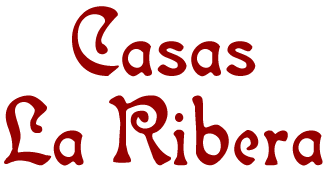Setting
We are truly fortunate to find ourselves right in the Huesca Pyrenees, an area with great variety and richness of landscapes as well as habitats under the protection of national (Ordesa and Monte Perdido) and natural (Posets-Maladeta, Sierra and Cañones de Guara) parks. It is without a doubt a territory to discover nature at its best.
Ordesa and Monte Perdido National Park
It was founded in 1918 and comprises 15,608 hectares of park territory and almost 20,000 hectares of peripheral land, in which valleys, mountains and nature sites have become the last safe spot for a number of animal and vegetable species. The park’s four areas (Añisclo, Escuaín, Ordesa and Pineta) offer never-ending possibilities in terms of routes and hikes.
Sobrarbe
With an extension of some 850 sq miles, the Sobrarbe region gathers 19 villages with a rich history, old traditions and amazing landscapes. The appeal of the region is confirmed by the number of people who visit it every year wishing to get the best out of one of the less populated areas in our country. There are many things to be explored and discovered.
Cultural Heritage
Visitors can enjoy a wide range of cultural choices, amongst which the region’s extensive architectural heritage (civil, religious and defensive) deserves a special mention. The region’s wide museum network, its traditional festivals or the beautiful samples of its musical folklore will not disappoint those visitors who expect to find something more than beautiful landscapes and mountain tranquillity.

Links
- monteperdido.comWebsite with lots of information on Monte Perdido and other valleys in the area.
- sobrarbe.comInstitutional website of the Sobrarbe region.
- continuapirineum.comInformation on the culture and heritage of the Sobrarbe region and the neighbouring French valleys of Aure and Louron. Comprehensive network of routes and paths with plenty of information, maps and photos.
- solomonte.comSpecialised nature guides.
- pirineodigital.comMagazine on Pyrenean current affairs.
- inm: EscalonaThe weather for the next few days.
- Piau-EngalyOne of the best ski resorts on the French Pyrenees, less than an hour away from Escalona. Includes webcam and daily snow report.
- pirineoturismo.comSobrarbe Tourist Association.
Ordesa and Monte Perdido National Park
It was founded in 1918 and comprises 15,608 hectares of park territory and almost 20,000 hectares of peripheral land, in which valleys, mountains and nature sites have become the last safe spot for a number of animal and vegetable species. The park’s four areas (Añisclo, Escuaín, Ordesa and Pineta) offer never-ending possibilities in terms of routes and hikes.
Añisclo
A wild 18 metre rocky canyon formed by an ancient glacier in its upper reaches and subsequently by the waters of th... more
Huesca, the province
Of the three provinces of Aragon, Huesca is the most northerly, bordering France, Lerida, Navarra, and Zaragoza. Its 15,000 km2 are divided between 10 regions.
It is a province rich in history, heritage, culture and natural attributes, The numerous museums and interpretative centres that there are in the province (www.huexpo.net) and the numerous protected areas, headed by the Ordesa and more
Sobrarbe, the region
This territory stands out above all for its natural richness, borne out by the existence within its borders of an entire national park and part of two others. Added to this is the interesting ancestral human culture, today in sharp decline, due to economic and social reasons, which have led to a massive depopulation since the mid 20th century. History has left important traces, among which we would highlight the medieval churches and castles (mainly dating from the XI and XII centuries), as well... more









